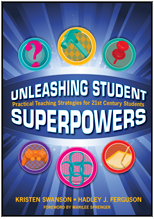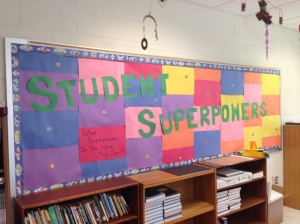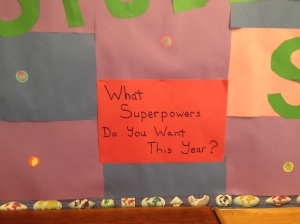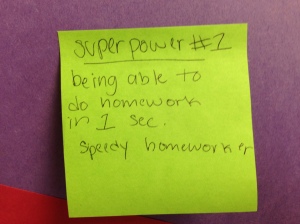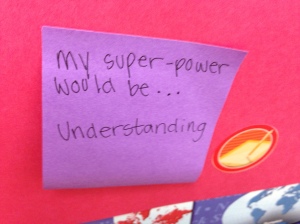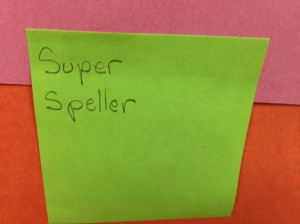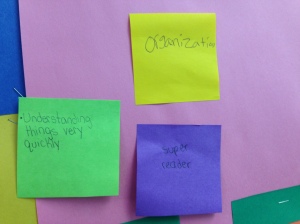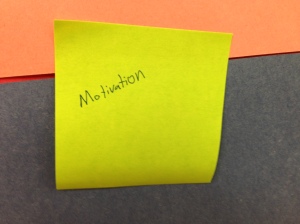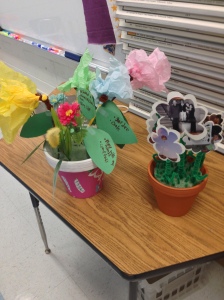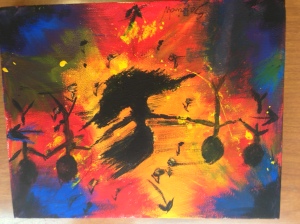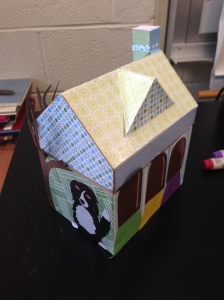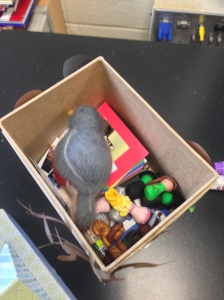On Friday, I had my 7th grade class for 90 minutes before the Holiday Assembly. Needless to say, I was a bit intimidated by the challenge of keeping them engaged without turning into a Grinch about the whole thing. I wanted it to be fun, but I also didn’t want to waste the time. It seemed like a very long time, when all of the focus was going to be on getting out and away from school.
The class started with them taking a quick quiz, one that we had been preparing for all week. I had created a 30 question multiple choice quiz on our Haiku site and set it so that they could take it up to 10 times. For the first nine times, they had two chances to get the correct answer. We had worked on it together, and they had studied in pairs and alone. Each time they had taken it, they got better and better, clearly enthusiastic about their increasing mastery of the material. On Friday, the vast majority of the class got 100%, which was an upbeat start to the day.
I then presented them with a challenge for the day – to create the best map of Africa that they could in 70 minutes. I told them that they had the freedom to decide what “best” meant for their map. I sort of held my breathe as I introduced it, because I wasn’t sure if it would catch their interest or imagination. If it didn’t, it was going to be a long 90 minutes of playing Geography games. Luckily, one girl, just as I finished introducing it and saying that there would be prizes, said, “Hey, that sounds like fun!” Quick internal sigh of relief on my part!
I gave each group a Tabletop Mapmaker set from National Geographic. It was a map of Africa, printed on nine sheets of paper that can be taped together to make the larger map. (If you haven’t tried these, they are a fabulous was to kick off a unit or work on geography.) I then gave them atlases and told them that they could use their laptops as well for research and ideas. I reminded them about where the scissors, tape, colored pencils and markers were and then let them lose. I also told them that they could listen to music if they kept it low, also something that I don’t usually do, but it was almost Break!
What happened next was 70 minutes of cheerful and engaged work! They explored and shared their ideas, each group seeking to come up with new ways to show what they had found about Africa. Some started with taping the map together while others began by coloring individual pages. Some focused on showing the different countries, coloring them as they were on a political map. One group decided to show rainfall and population to show the correlation between them. Another focused on agriculture.
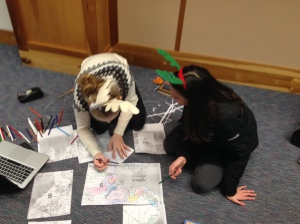
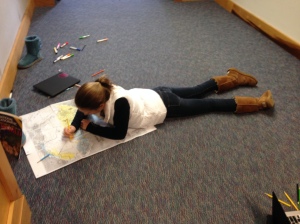
At one point, as I was walking around the room, a student who can be resistant to doing the work of the class, asked me why they were doing this activity. She was clearly enjoying it but was just used to asking the question. I explained that with 90 minutes on the last day before Winter Break, I wanted them to be learning but also having fun and that working with maps seemed like a good way to do that.
Her response totally amazed me!
“Wow! I never realized you think about things like that! What a good idea!”
Made my day! If on some level, she can begin to understand that what happens in the classroom has a goal of helping her learn and grow, then we have taken a step forward!
While they were working, I created a Google Form. At the end of the period, they voted, with each student getting two votes – one for her work and one for another map. It was very close but the map with the precipitation and population won.
We made it to Winter Break with laughter and learning! I had fun watching them and talking to them about what they were doing, and they had fun working together and taking on the challenge!
Now it’s time for some rest and renewal! Happy Break to all!
